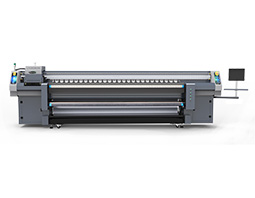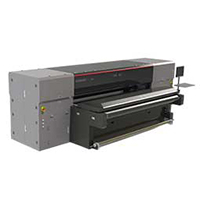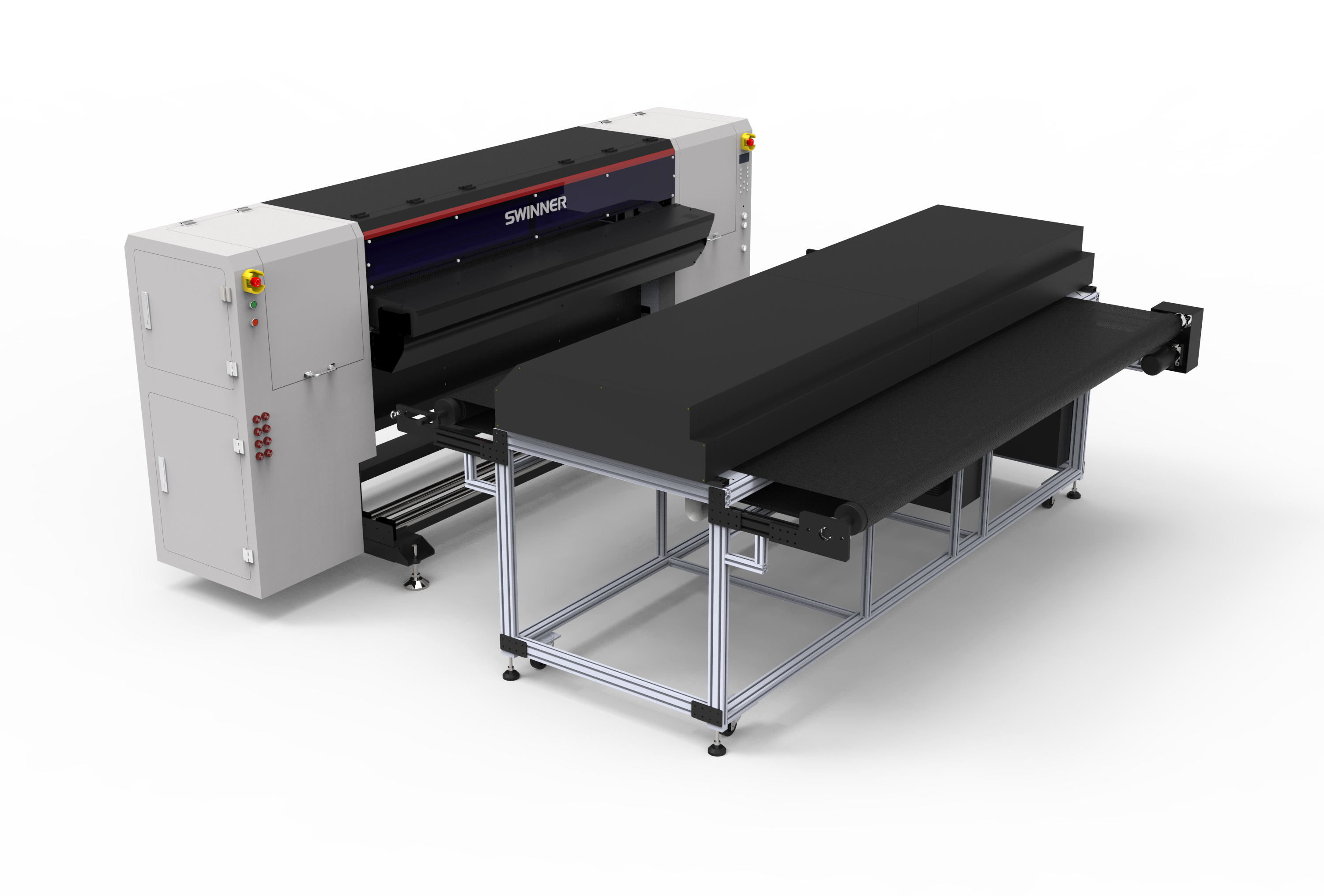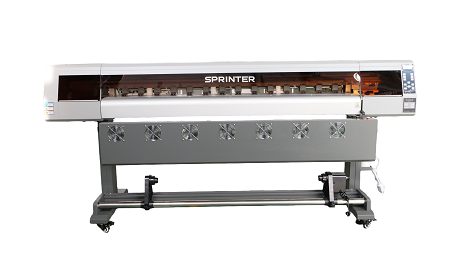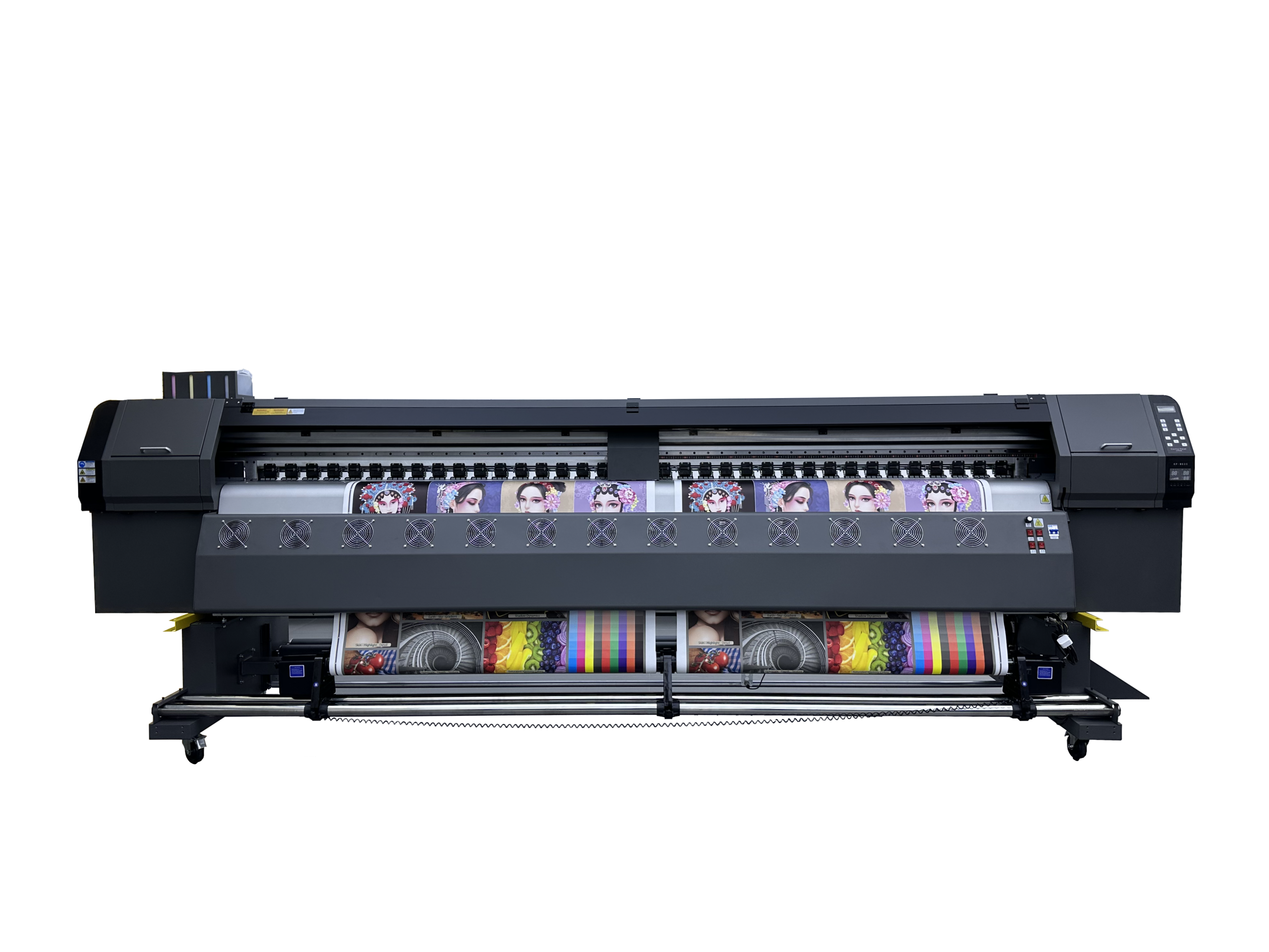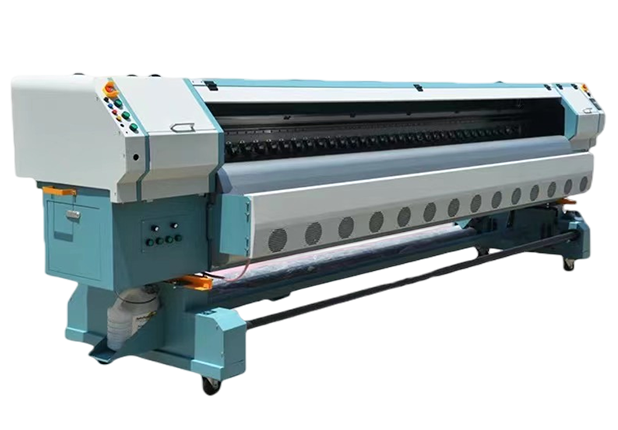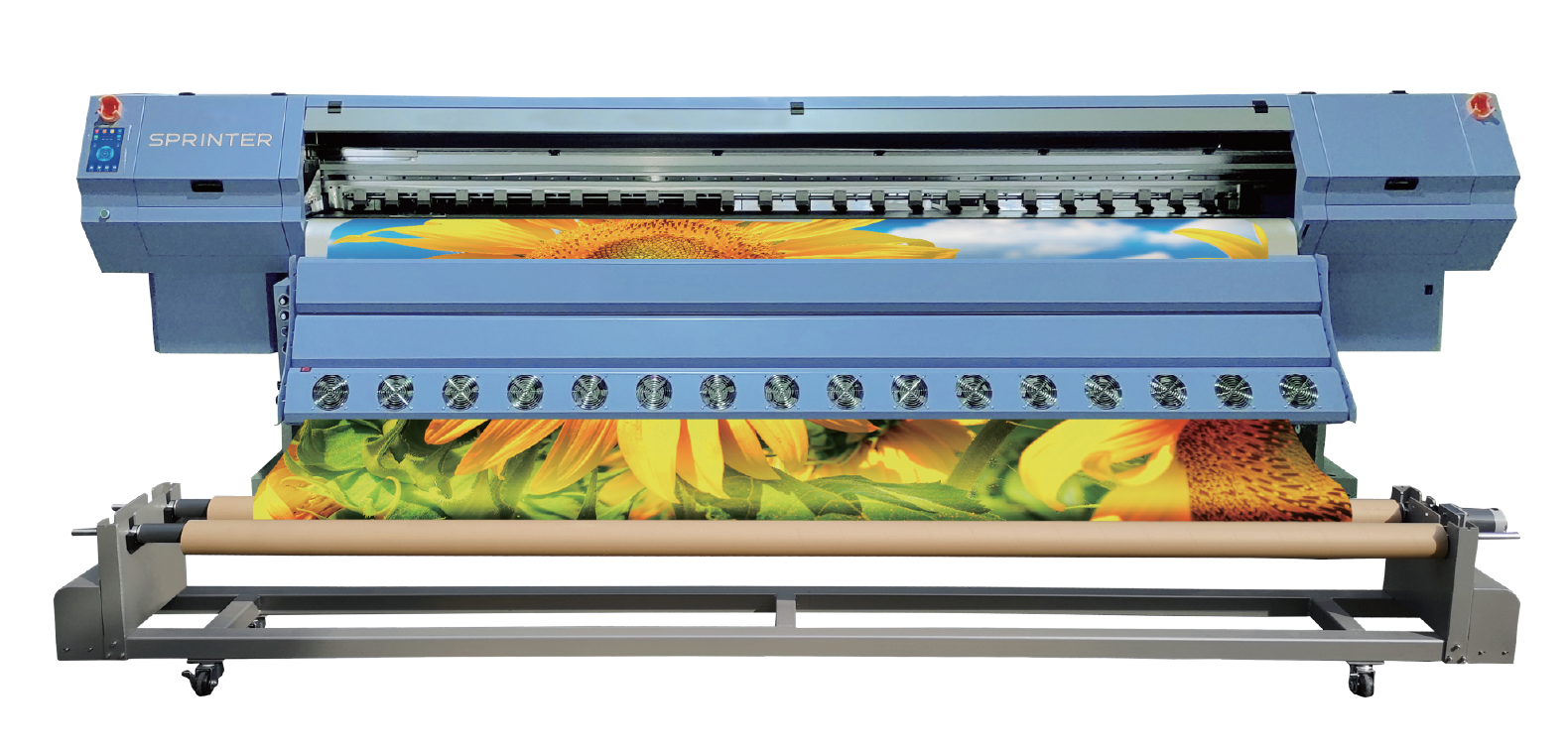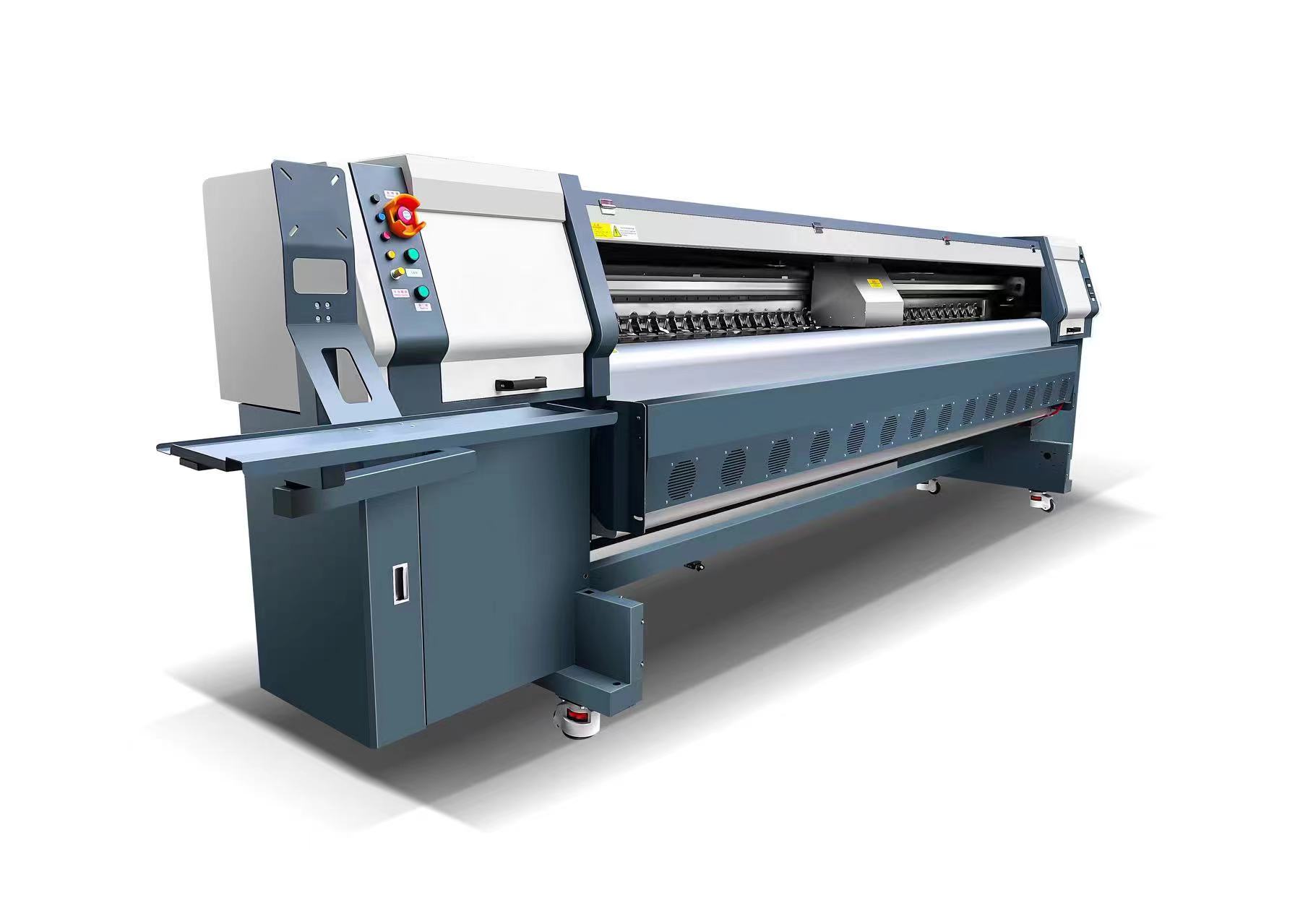What happens when the ink is over-cured?
There is a theory that when the ink surface is exposed to too much UV light, it becomes harder and harder. And when one prints another ink on this hardened ink film and dries it a second time, the adhesion between the top ink and the bottom ink becomes poor.
The other theory is that excessive curing causes photo-oxidation of the ink surface. Photo-oxidation occurs by breaking the chemical bonds on the ink film surface, and if the molecular bonds on the ink film surface are degraded or damaged, then the adhesion between it and another ink layer will be reduced. An over-cured ink film is not only inflexible, but also prone to surface embrittlement.
- Why is the curing speed of some UV inks faster than others?
UV inks are generally formulated to meet the characteristics of certain substrates and the specific requirements of certain applications. From a chemical point of view, the faster the ink cures, the less flexible it will be after curing. We can imagine that when the ink curing occurs, the ink molecules are cross-linked reaction, if these molecules form a very large number of molecular chains and a lot of bifurcation, then the ink curing speed will be very fast, but not very flexible; if these molecules form a relatively small number of molecular chains, and no bifurcation, then the curing speed of this ink may be very slow, but will certainly be very flexible.
Most inks are designed to meet the needs of the application. For example, for inks designed specifically for the production of membrane switches, the cured ink film must be compatible with laminating adhesives and be flexible enough to accommodate subsequent processes such as die-cutting and embossing. It is worth noting that the chemical materials used in the ink must not react with the surface of the substrate, otherwise it will cause phenomena such as cracking and breaking or delamination. The curing speed of such inks is usually slow. In contrast, those inks designed for the production of cards or hard plastic display boards do not need to have such high flexibility and, depending on the needs of the application, they dry more quickly.
Whether the ink dries fast or slow, we have to start with the final application in mind. Another issue worth noting is the curing equipment. Some inks could have been cured very quickly, but due to the inefficiency of the curing equipment, it is also possible that the curing of the ink may be slowed down or cured incompletely.
- Why does the PC film turn yellow when I use UV ink?
Polycarbonate is sensitive to UV light at wavelengths less than 320 nm. The yellowing of the film surface is caused by the breakage of molecular chains caused by photo-oxidation. The plastic molecular bonds absorb UV energy and produce free radicals, which react with oxygen in the air and change the appearance and physical properties of the plastic.
- How to avoid or eliminate the yellowing of polycarbonate surface?
If UV inks are used to print on polycarbonate film, then the yellowing of its surface can be reduced, but not completely eliminated. The appearance of this yellowing can be effectively reduced by using curing bulbs with iron or gallium, which reduce the emission of short wavelength UV light to avoid damage to the polycarbonate. In addition, proper curing of each ink color also helps reduce the exposure time of the substrate to UV light and reduces the likelihood of discoloration of the polycarbonate film.
- what is the relationship between the setting parameters on the UV curing lamp (watt/inch) and the reading we see from the radiometer (watt/cm2 or milliwatt/cm2)?
Watt/inch is the unit of power of the curing lamp, which is derived from Ohm's law volts (voltage) x amps (current) = watts (power); and watt/cm2 or milliwatt/cm2 indicates the peak illumination (UV energy) per unit area when the radiometer passes under the curing lamp.
Peak illuminance depends primarily on the power of the curing lamp. We measure peak illuminance in watts primarily because it represents the amount of electrical power consumed by the curing lamp. In addition to the amount of power received by the curing unit, other factors that affect peak illuminance include the condition and geometry of the reflector, the age of the curing lamp, and the distance between the curing lamp and the curing surface.
- What is the difference between mJ and mW?
The total energy irradiated to a particular surface in a given period of time is usually expressed in terms of joules per flat cm or mJ/cm2. It is mainly related to the speed of the conveyor belt, the power of the curing lamp, the number, the age, the condition and the shape and condition of the reflector in the curing system.
And irradiation to a particular surface of UV energy active radiant energy power is mainly expressed in watts / cm2 or milliwatt / cm2. The higher the UV energy irradiated to the surface of the substrate, the more energy that penetrates into the ink film. Whether it is milliwatt or millijoules, are to be measured in the radiometer wavelength sensitivity to achieve certain requirements.
- How do we ensure proper curing of UV inks?
The curing of the ink film at the first pass through the curing unit is very important. Proper curing minimizes substrate distortion, over-curing, rewetting and under-curing, and optimizes ink-to-humor or coating-to-coating adhesion.
Screen printers have to define production parameters before production starts. To test the curing efficiency of UV inks, we can first start printing at the lowest speed that the substrate will allow and cure the sample sheet that was printed first. Subsequently, the power of the curing lamp is set to the value specified by the ink manufacturer. In the case of colors that are not easily cured, such as black and white, we can also adjust the parameters of the curing lamp appropriately.
After the sheet has cooled, we can use the two-way shadow line method to determine the adhesion of the ink film. If the sample sheet passes the test successfully, then you can increase the sheet transfer speed by 10 ft/min, then print and test again until the ink film loses adhesion to the substrate and record the transfer belt speed and curing lamp parameters at that point. Next, the conveyor speed can be reduced by 20-30%, depending on the characteristics of the ink system or the ink supplier's recommendations.
- If the colors do not overlap, should I be concerned about over-curing?
Excessive curing occurs when the surface of an ink film absorbs too much UV light. If this problem is not detected and solved in time, the surface of the ink film will become harder and harder. Of course, as long as we don't do color overprinting, we don't need to be too concerned about this problem.
However, there is another important factor to consider, and that is the film or substrate being printed on. UV light can affect most substrate surfaces and certain plastics that are sensitive to specific wavelengths of UV light. This sensitivity to specific wavelengths combined with oxygen in the air can lead to degradation of the plastic surface. The molecular bonds on the substrate surface may be broken and cause a failure of adhesion between the UV ink and the substrate. The degradation of the substrate surface function is a gradual process and is directly related to the UV light energy it receives.
- Is UV ink a green ink and why?
UV inks are indeed more environmentally friendly than solvent-based inks. UV-curable inks are able to become 100% solid, which means that all components in the ink are turned into the final ink film. Solvent-based inks, on the other hand, emit solvents into the atmosphere as the ink film dries. Since solvents are volatile organic compounds, they can be harmful to the environment.
- What is the unit of measurement of the density data displayed on the densitometer?
Optical density is unitless. A densitometer measures the amount of light reflected or transmitted from a printed surface. A photoelectric eye attached to the densitometer converts the percentage of reflected or transmitted light into a density value.
- What factors will affect the density?
In screen printing, the variables that affect the density value are mainly the thickness of the ink film, the color, the size and number of pigment particles and the color of the substrate. The optical density is mainly determined by the opacity and thickness of the ink film, which in turn is influenced by the size and number of pigment particles and their light absorption and scattering properties.
- What is Dain level?
The dyne/cm is the unit used to measure surface tension. This tension is caused by the intermolecular gravitational force of a particular liquid (surface tension) or solid (surface energy). For practical purposes, we will usually refer to this parameter as the dyne level.
The dyne level or surface energy of a particular substrate represents its wettability and ink adhesion. Surface energy is a physical property of a substance. Many of the films and substrates used in printing have low print levels, such as polyethylene at 31 dynes/cm and polypropylene at 29 dynes/cm, and therefore require special handling.
Proper handling can improve the dyne level of some substrates, but this is only temporary. When you are ready to print, there are a number of other factors that can affect the dyne levels of substrates, such as the time and number of treatments, storage conditions, ambient humidity and how much dust is present. Because Dain levels change over time, most printers find it necessary to treat or re-treat these films prior to printing.
- How is the flame treatment carried out?
By nature, plastics are non-porous and have inert surfaces (low surface energy). Flame treatment is a method of pre-treating plastics to improve the Dainty level of the substrate surface. In addition to the plastic bottle printing field, this method is also widely used in the automotive and film processing industries. Flame treatment not only improves the surface energy, but also eliminates surface contamination.
Flame treatment contains a series of complex physical and chemical reactions. The physical mechanism of flame treatment is that: the high temperature flame will transfer energy to the oil and impurities on the surface of the substrate, so that it is heated to evaporate and play a cleaning role; and its chemical mechanism is that: the flame contains a large number of ions with strong oxidation, and the surface of the treated material under high temperature oxidation reaction, so that the surface of the treated material forms a layer of charged polar functional groups, which improves its surface energy, thus also The surface energy of the treated material is increased, thus also improving its ability to adsorb liquids.
- What is corona treatment?
Corona discharge is another method to increase the level of dyne. By applying high voltage to the dielectric roll, it can ionize the surrounding air, and when the substrate passes through this ionized area, the molecular bonds on the surface of the material are broken. This method is commonly used in rotary printing of thin film materials.
- How does the plasticizer affect the adhesion of the ink on PVC?
Plasticizers are chemicals that make printed materials more flexible and supple, and their use in PVC (polyvinyl chloride) is very common. The type and amount of plasticizer added to flexible PVC or other plastics depends largely on the mechanical, thermal and electrical properties one requires from the printed material.
Plasticizers have the potential to migrate to the surface of the substrate and affect the adhesion of the ink. The plasticizer left on the surface of the substrate is a kind of contamination, which will reduce the surface energy of the substrate. The more contamination on the surface, the lower the surface energy, and the less it will adhere to the ink. To avoid this, one can clean the substrates with a mild cleaning solvent before printing to improve their printability.
- How many lights do I need to use for curing?
Although ink systems and substrate types vary, in general, a single lamp curing system is sufficient. Of course, if you have the budget, you can also choose a dual-lamp curing unit to increase the curing speed. What makes two curing lamps better than one is that a dual lamp system provides more energy to the substrate at the same transfer speed and parameter settings. One of the key considerations we need to make is whether the curing unit will be sufficient to dry the ink printed at normal speeds.
- How does the viscosity of the ink affect the printability?
Most inks are thixotropic, which means that their viscosity varies with shear, time and temperature. In addition, the higher the shear rate, the lower the viscosity of the ink will be; the higher the ambient temperature, the lower the annual ink will be. Screen printing inks generally achieve good results on the press, but occasionally have problems with printability, depending on press settings and prepress adjustments. Also the viscosity of the ink on the press is different from its viscosity in the cartridge.
Ink manufacturers will set a specific viscosity range for their products. For inks that are too thin or too low in viscosity, the user can also add a thickener as appropriate, while for inks that are too thick or too high in viscosity, the user can also add a thinner. In addition, you can also contact the ink supplier for product information.
- What are the factors that affect the stability or shelf life of UV ink?
An important factor affecting ink stability is the storage of the ink. UV inks are usually stored in plastic cartridges rather than metal cartridges because the plastic containers are somewhat oxygen permeable and ensure that there is a certain air gap between the ink surface and the container lid. This air gap - especially oxygen in the air - helps minimize early cross-linking of the ink. In addition to packaging, the temperature of the ink containers plays a crucial role in maintaining their stability. High temperatures can cause premature reactions and cross-linking of inks.
Adjustments to the original ink formulation may also affect the stability of the ink on the shelf. Additives, especially catalysts and photoinitiators, may shorten the shelf life of inks.
- What is the difference between in-mold labeling (IML) and in-mold decoration (IMD)?
The basic meaning of in-mold labeling and in-mold decoration is the same, that is, the label or decorative film (prefabricated, unprefabricated) is placed inside the mold and the molten plastic supports it when the part is formed. The former uses labels that are produced using different printing techniques, such as gravure, offset, flexographic or screen printing. These labels are usually printed only on the upper surface of the material, while the unprinted side is attached to the injection mold.
In-mold decoration is mostly used to produce durable parts and is usually printed on the second surface of a transparent film. In-mold decoration is usually printed using a screen printer, and the film and UV inks used for it must be compatible with the injection mold.
- What will happen if I use a nitrogen curing unit to cure color UV ink?
Curing systems for curing prints with nitrogen have been around for about a decade. These systems were mainly used in the curing process of textiles and membrane switches. The main reason why people want to use nitrogen instead of oxygen is that oxygen inhibits the curing of the ink. However, because the light from the bulb in these systems is very limited, they are also not very effective in curing pigmented or colored inks.

